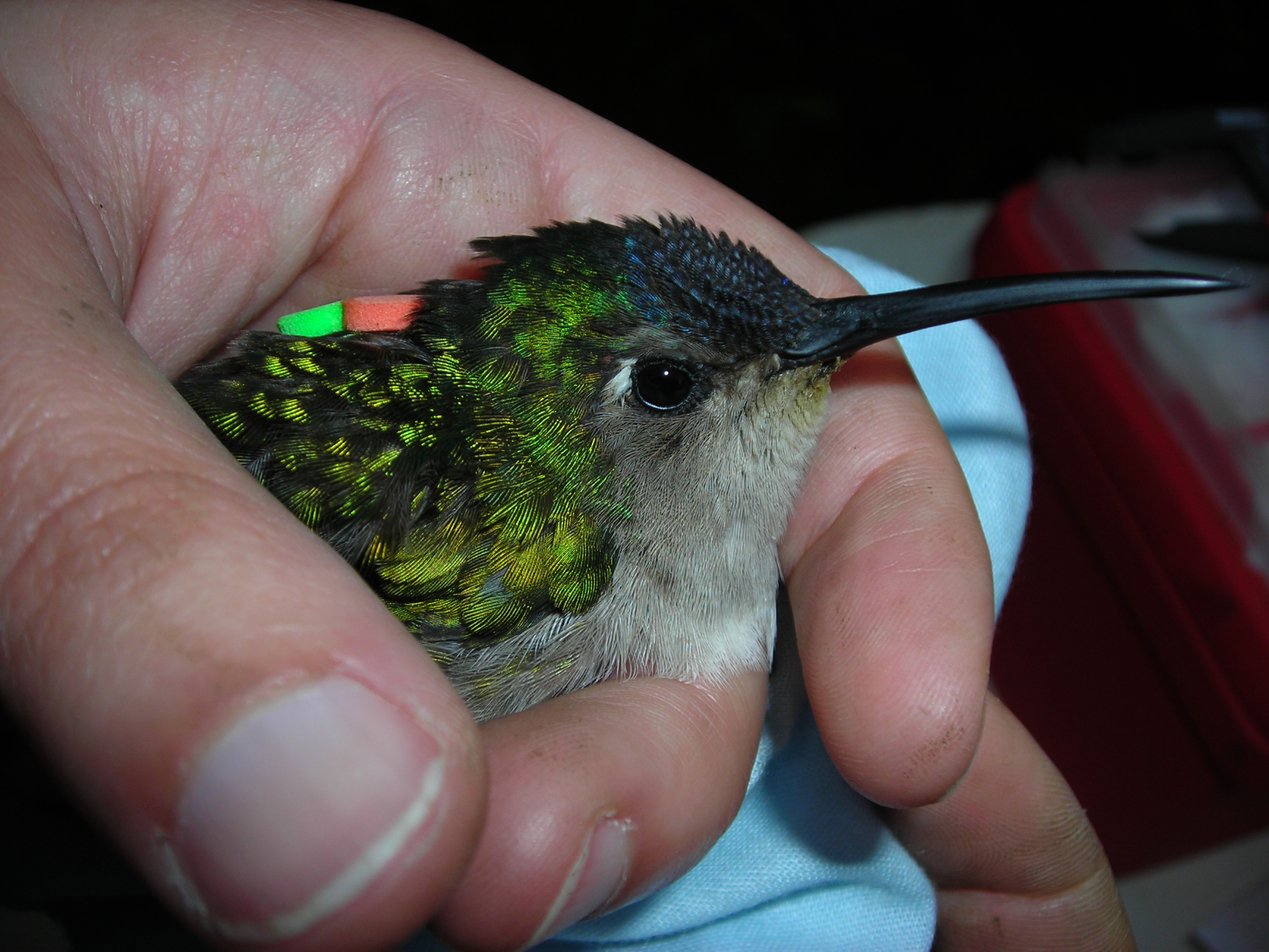Guest post by researcher Juan Francisco Ornelas
Linked paper: Male relatedness, lekking behavior patterns, and the potential for kin selection in a Neotropical hummingbird by C. González and J.F. Ornelas, The Auk: Ornithological Advances.
About 25 years ago, I started a research position at the Instituto de Ecología AC in Veracruz, Mexico. During my first explorations of the cloud forest there, I heard the marvelous sound that eventually became a key part of my work and that of my assistant Clementina González. After spending my graduate school years at the University of Arizona and learning the sounds of the Sonoran Desert, I decided to tape record the unfamiliar sound, a decision that resulted in a great journey.
When I was field hunting for the sound, holding my old tape recorder, I soon heard swooshing noises and the mystery sound coming from somewhere in the bushes and thickets of the understory, but at first I could not see what was making it. Suddenly, I spotted it: a Wedge-tailed Sabrewing! These birds are among the most common hummingbirds in the area, or at least the most belligerent. Males are polygamous and (like all male hummingbirds) do not participate in raising the young, but this species forms leks, which are areas where males sing to show off and females choose mates.
Years later, Clementina started recording songs from different groups, and she realized that they sounded different. Once we were familiar with the behavior of Wedge-tailed Sabrewings, we documented the structure and variation of their songs within and between singing groups in central Veracruz. What we found was very exciting. Locally known as fandanguero (because it sings all day long like local folks at the fandangos), the Wedge-tailed Sabrewing has a song that is complex and variable, composed of more than 20 different syllable types per individual. We found a total of 239 different syllable types among the eight singing groups we studied.
This became the basis of Clementina’s doctoral thesis. She started to record songs from leks across their geographic distribution and showed that their song varies throughout eastern Mexico, where populations of three subspecies (curvipennis, excellens, and pampa) are disconnected. When she looked at their DNA, lek members clustered into the three subspecies and could also be distinguished by their songs. We wondered, what caused the genetic and behavioral differences? Genetic drift (the accumulation of random mutations in a population) could partially explain their genetic and behavioral differences, because the members of populations of one subspecies don’t mate with the others. But the genetic drift alone is not enough to fully explain the observed song variation within and among leks of each of the subspecies. Some sort of selection might be occurring.
We wanted to explore more deeply what was happening inside the leks. Clementina realized that males within a lek also sang differently and that males with different songs were clustered spatially, with an introductory syllable in their songs as the signature of a song neighborhood. It is not clear at this point in our research how and why these unique and variable complex acoustic signals have evolved in some but not all lekking species of hummingbirds, but we’re working on figuring it out.
For our newest study, published in The Auk: Ornithological Advances, we asked whether lek formation and the existence of song neighborhoods within leks are due to kin selection. In this system, kin selection would occur when a member of a song neighborhood engages in self-sacrificial behavior that benefits the genetic fitness of its relatives in the neighborhood. To address this, we genotyped males in leks located across the distribution of Wedge-tailed Sabrewings as well as in a focal lek composed of song neighborhoods and estimated their relatedness — not an easy task! Most males within leks were unrelated, and song neighborhoods were not composed of related individuals. This means that kin selection is not acting on the formation of leks or song neighborhoods in this species, suggesting that membership in song neighborhoods is achieved by learning the song of the neighborhood, regardless of kinship.
